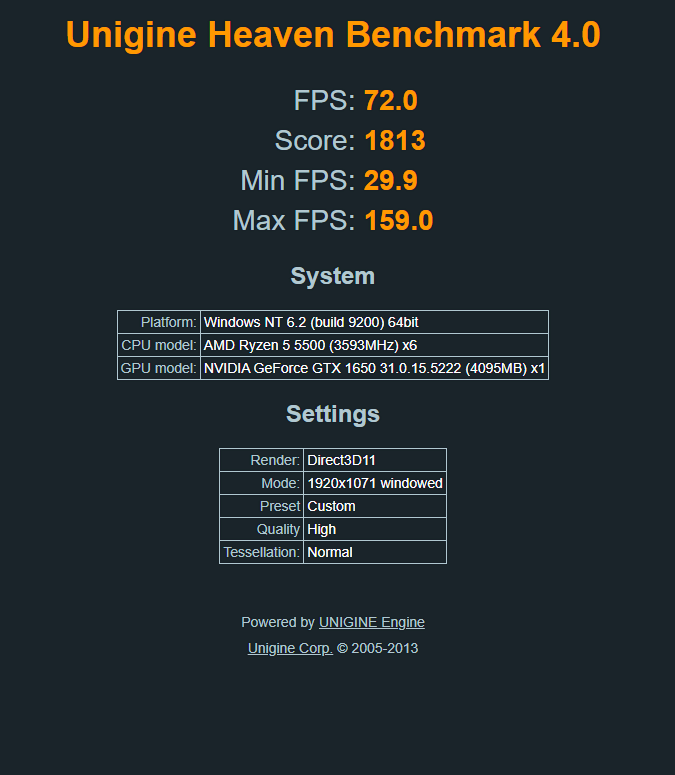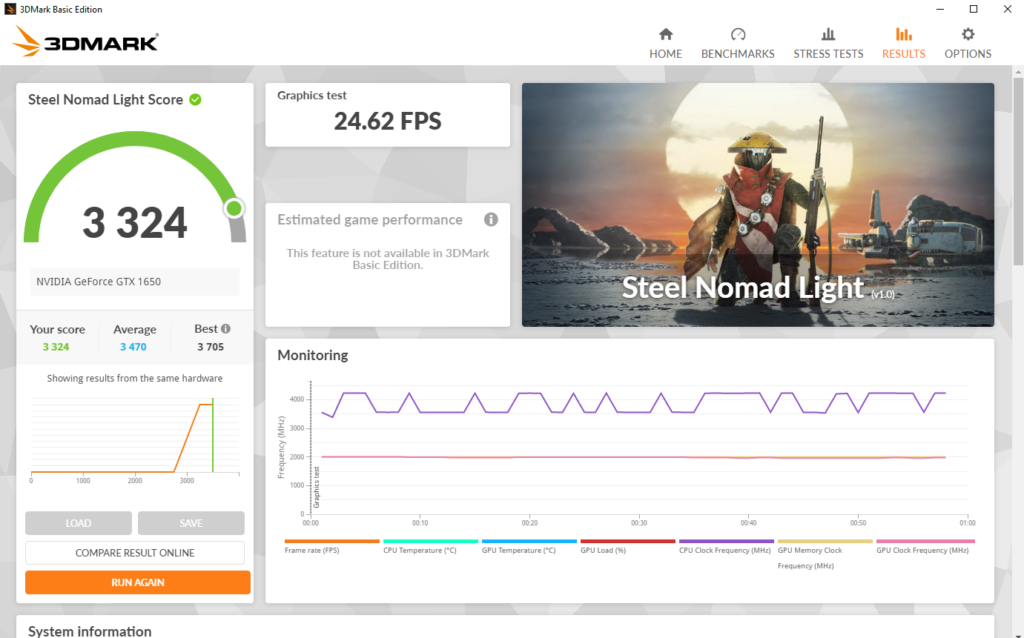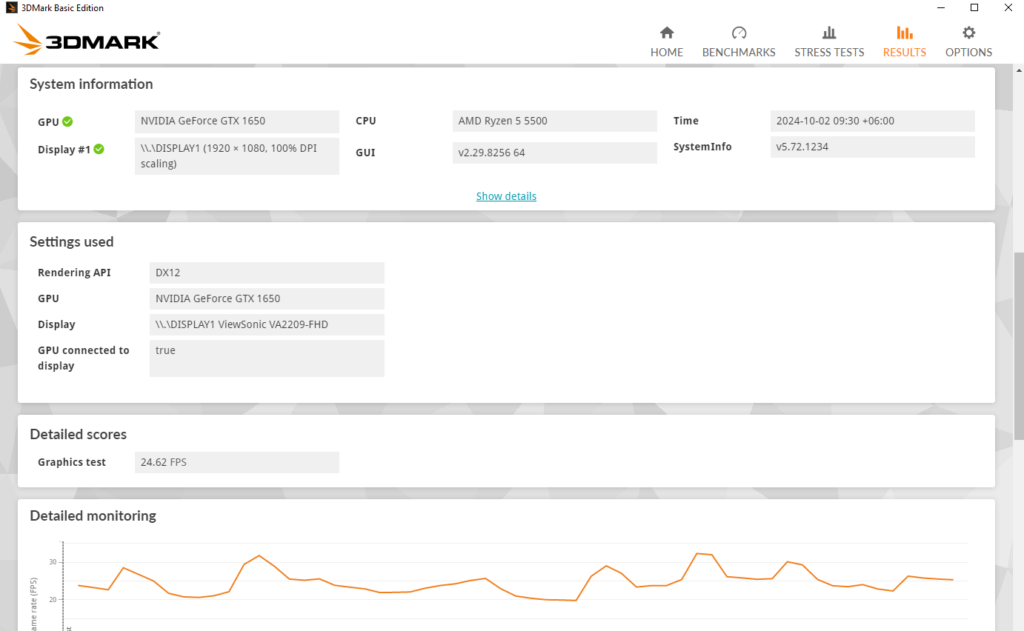5 min read
Jan 09, 2025
Heaven Benchmark vs. 3DMark: Which GPU Benchmark Tool is Better?

In the midst of numerous benchmark tools, Heaven Benchmark & 3DMark have truly endured the test of time. That’s why enthusiasts still rely on these awesome tools for their benchmarking purposes.
However, there are definitely some key contrasts between the two tools. Which one is better for what kind of benchmarking?
Today, this comparative analysis will reveal the major strengths and weaknesses of both tools thoroughly! So, stay with us to learn more about these two incredible benchmarking software.
Our Findings on Heaven Benchmark
Heaven Benchmark has been around for a while now as it was released back in 2009. Based on the UNIGINE Engine, Heaven can test and assess the most demanding GPUs currently available on the market.
The main features of this benchmarking tool include:
- Extreme hardware stability testing
- 100% GPU-bound benchmarking that ensures accurate results
- Support for DirectX 9, DirectX 11, and OpenGL 4.0
- GPU temp & monitoring
- Adaptive hardware tessellation
- Dynamic sky with volumetric clouds and tweakable day-night cycle
- Real-time global illumination and screen-space ambient occlusion
- Support for stereo 3D and multi-monitor configurations
- Cinematic and interactive fly/walk-through camera modes
- Powered by UNIGINE 1 Engine
While the features can be great, how does the benchmarking tool perform? With high-end GPUs such as RTX 4090 or AMD RX 7900 XTX, the benchmark can achieve insane scores, considering you have an optimal settings preset.
However, tech enthusiasts now prefer more modern architecture for benchmarking and that’s where 3Dmark comes in!
Our Findings on 3DMark
3DMark can be thought of as the evolved benchmarking tool for modern GPUs. Released first in 1998, for Windows 98, 3DMark has come a long way in progression. Developed by UL, the benchmark can properly determine the performance & workload process for both CPUs & GPUs.
The latest version was released in 2019, 3DMark Port Royal, which can even compare real-time ray tracing capabilities of modern Nvidia & AMD GPUs!
Here are the core features of 3DMark:
- DirectX API Raytracing test
- Easy testing process
- Renders at max 3840x2160 (4K UHD resolution
- CPU benchmarks for multicore processors
- Overclocking performance tracking
- Enhanced for extreme hardware
- Online test score comparison
- Available on both PCs & mobiles
Compared to other benchmarking tools, 3DMark has more than 10 different profile tools including Steel Nomad, Speed Way, Time Spy, Port Royal, Night Raid, Wild Life, and Fire Strike to choose from. So. you are getting enough options to render your PC with full power!
Comprehensive Comparison: Heaven Benchmark vs. 3DMark
To compare Heaven Benchmark & 3DMark, we need to start with the beginning. As mentioned before, 3DMark is a more versatile tool for benchmarking purposes as it offers more versions as well as mobile support.
| Factors | Heaven Benchmark | 3DMark |
| Primary Focus | GPU testing | GPU, CPU, memory testing |
| Graphics API | DirectX 11 | DirectX 12, Vulkan, and others |
| Rendering Quality | Maximum 1080P | Maximum 4K |
| Scoring System | Single score | Multiple scores |
| Benchmark Types | Single scene | Multiple tools and scenes |
| Cross-platform Support | Windows, MacOS, Linux | Windows, MacOS, Linux, iOS, Android |
That’s one thing completely missing from the long feature list of Heaven Benchmark. Well, that might not be a significant factor for many but that’s definitely worth mentioning.
Testing Scenario
On the one hand, Heaven Benchmark has support for DirectX 9, DirectX 11, and OpenGL 4.0 which is quite commendable. Moreover, it offers full flexibility over the rendering process by letting the users select the custom presets.
On the other hand, 3DMark from the very start focuses on multiple developing tools. Apart from supporting DirectX 9, and 11, it also has support from DirectX 12 which is insane! Plus, The Time Spy version can render in full 4K. That’s one point for 3DMark for offering different testing scenarios.
Test Results & Accuracy
First of all, we need to keep in mind that both the benchmarking tools have different rendering processes so we can’t compare the results side-by-side. However, we can run the benchmark on our PC and compare the results from online sources & forums to check whether the tool is consistent.
So, we took a GTX 1650 GPU for a testing sample. Here’s the full specs:
OS: Windows 10 Home
CPU: AMD Ryzen 5 5500 16MB L3 cache
Motherboard: Gigabyte B450M DS3H
RAM: Kingston Fury 8GBx2 3200MHz DDR4
GPU: EVGA GeForce GTX 1650 SC 4GB
PSU: Corsair CV450 Bronze PSU
SSD: HP EX900 M.2 250GB PCIe NVMe
Let’s start with the results from Heaven Benchmark first.

As you can see, the overall score came just above the 1800 which is decent for a GTX 1650 card. To compare it to other GTX 1650 GPUs, we looked through online forums and found out that for a mostly similar PC build, the result hovers in the 1800-1900 area. So, we can confirm that the GPU is performing properly in the basic settings.
Now, let’s take a look at the 3DMark score for the same PC:

Here’s what is great about 3DMark:
You can run a quick test and see the complete comparison tab from the tool. You can easily see that our sample PC is almost in the ~100 score range of the average, similar to Heaven Benchmark. So, it’s safe to assume that the GPU is working properly.
Furthermore, you can just scroll down and check your system information at a glance:

The detailed monitoring feature also works accurately if you’re running the test for a while.
However, the only drawback with 3Dmark is that even the Steel Nomad Light is quite tasking for an entry-level GPU (GTX 1650) to run. So, it’s better to have at least a mid-range GPU to run the 3DMark stress test.
Parting Words
Overall, it’s safe to say if you want to test your GPU more flexibly, then 3DMark is surely the better way to move forward.
However, you need to keep in mind that Heaven Benchmark can offer quick & accurate results without taking too much of your disk space which can be best for budget gaming PCs.
So, depending on your needs, you can’t really go wrong with either of those!
Comments 0
More post from Dewan Farhan
7 min read
Jan 09, 2025
Fix Your Connection is Not Private Error in Chrome or Other Browsers
We all want to browse the internet safe and sound but often are met with quite safety issues. If you have ever dealt with "Your Connection is not Private" message on a browser, then you know what I&r...
Share: Fix Your Connection is Not Private Error in Chrome or Other Browsers
6 min read
Jan 09, 2025
Top 10 Games That You Will Love to Play [2024 Edition!]
Who doesn’t love a good game, right? However, every year, we see an enormous collection of released games that we can hardly play in 365 games. So, if the gamer blood is what fuels you but can...



![Top 10 Games That You Will Love to Play [2024 Edition!] Fileion.Com](/curator/stack/medias/2025/01/09/top-10-games-to-play-in-2024-1.webp?q=100&w=1440&s=1f39ab99517a5df8e7f46b3e51f16b4e)



